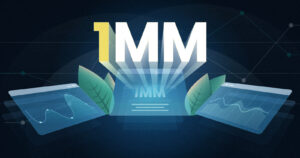The ambitious goal behind Onbrane is to become the primary debt market fabric. But as important as what we aim to become, is how we intend to get there. Before designing our roadmap, we studied our market with the objective of creating an organization and an approach that would maximize our chances of reaching our goal. This meant understanding intimately our market needs, but also finding the most efficient way to bring innovative solutions to our market. From this examination came two guiding principles – We would work with the industry to improve together the functioning of the primary debt market (1) and we would have a progressive approach, as revolutions don’t work in finance (2). This article deals with the first topic.
Introduction – The fundamental of delivering value to the marketplace
Even in today’s fast changing environment, the commercial success of a product is effective and sustainable only when both consumers and producers have found a point of equilibrium between value and cost, present and future. For the producers, it means that a product or service must be sold with an immediate profit exceeding the potential future liabilities. For the consumer, it means that the lifetime value of a product must be superior to the initial cost and potential ongoing maintenance expenses.
Common issue for consumers and producers – Real vs perceived cost and value
Based on my opening statement, both purchasing and selling decisions should be the result of an arithmetic calculation. This is not entirely the case as both cost and value could either be real or perceived. In most cases for a consumer, the cost is mostly real and the value largely perceived. For a producer, a product cost is also real but more complex to calculate. Large companies must dedicate important resources to understand their manufacturing and distribution expenses. On the other hand, value for a producer should simply be their profit, but there too, potential future liability blurs the result. This introduces a level of uncertainty for both parties, which affects not only the merit of any transaction but its profitability on the long run as well.
Opposite bias for consumers and producers – Present vs future cost and value
While both consumers and producers have a common issue with real vs perceived cost and value, they have opposite bias for time sensitivity. For consumers, the cost of buying a product or a service is immediate and real. The perceived value received must therefore also be relatively immediate. The consumers bias is short-termist. For producers, the total manufacturing and distribution cost is felt differently. Bringing a product to the market is a complex process which requires a business plan that unfolds over time. The more important the initial investment, the more long-term biased are the producers. Understanding these fundamentals is essential to successfully recognizing and addressing the drastic shift that is taking place in today’s economy.
New consumer demands – XaaS, ecosystems, communities… UX
Indeed, consumers are increasingly looking differently at the cost/value equation by instead focusing on the overall user experience (UX). Of course the cost and value remain paramount, but rather than purchasing static products, consumers are buying into ecosystems with everything sold as a service (XaaS), constantly adapting to their evolving needs. Additionally, consumer groups are becoming communities, sharing experiences and driving change together. This means that consumers are looking at cost and value in a different way. In this new model, cost is increasingly recurring, value constantly changing, and the network effect has become a determining force. For producers, this new model is a dreadful threat, as it requires a profound transformation of their product lines, organizations and cultures; But it is also a great opportunity for the companies able to adapt faster than their competitors.
The finance industry – Against the tide
Of all the industries, none are facing a bigger challenge to adapt to this new model than the finance industry. Banks, not unlike other industries, have huge legacy infrastructures built around products and organization silos, making any transformation challenging, risky and expensive. But contrary to other industries, banks must in addition to providing services to their clients, control their clients’ activities. What if he defaults on his mortgage? What if a client uses the bank for illicit activities? In this context, bankers main concern is not customer satisfaction but monitoring risks and complying with their regulatory obligations. The resulting bicephalic relationship bankers have with their clients is in contradiction with the sort of user experience clients expect. No other industry has such a gap between the consumers’ low perceived present value and the producer’s high sensitivity to perceived future cost. This is unsustainable.
The finance industry transformation – Here comes the Fintech
There is no question that the finance industry, despite its singularity, must address this issue and provide the consumer with a completely new and improved user experience. Banks too have to go toward XaaS, ecosystems and communities or they will become irrelevant. This transformation has already begun – and Fintechs are leading it. In some markets, Fintechs are in direct competition with banks by offering solutions that are leveling the financial playing field for everyday people, giving them access to services previously reserved for the wealthy. Fintechs are also allowing retail investors to have greater participation in some markets by reducing information asymmetry, lowering barrier of entries and again by providing a more level playing field.
But often banks and Fintechs have more to gain by collaborating than from direct competition. A study from Capgemini ranked the main reasons for Fintechs to be partnering with traditional financial service firms.

Banks also have a lot to gain by collaborating with Fintechs. Banks conservative culture has always been an impediment for innovation and agility. The 2008 financial crisis and the resulting increase in regulatory burden did not contribute to improving their condition. Therefore by partnering with Fintechs, traditional financial service firms stand to accelerate their capability to introduce new products, streamline processes, enhance customer experience and therefore increase revenues.
The primary debt market – A case for Fintech and financial industry partnership
In our opinion the primary debt market displays all the characteristics needed for a successful partnership between a Fintech such as Onbrane and the traditional financial service firms. The primary debt market involves a large number of actors such as issuers, intermediaries, investors, depositaries and clearers. There is no common platform to centralize and harmonize the information flow between them. The many diverse processes resulting from the absence of an industry platform are complex and poorly digitalized. Some segments of the market suffer from information asymmetry while other segments, including midcap, are underserved. This makes the case for a Fintech.
On the other hand this is a trusted market that works and where each participant plays an important role in ensuring users get funded and investors have access to the opportunities they seek. Intermediaries play a key role in the fluidity and liquidity of the market; thanks to their sales teams and their ability to carry Commercial Paper. The regulatory framework is well in place. The overall industry risk is in check. Most Commercial Papers can be cleared swiftly. An overhaul of the industry is therefore not called for and would introduce excessive amount of risk in comparison with its benefits. This makes the case for a continued participation of traditional financial service firms.
Conclusion – Onbrane elements of design
The Financial Services Industry is suffering from an unsustainable gap between their clients’ low-perceived present value and the industry’s high sensitivity to perceived future cost. These gaps are due in some measure to the outdated user experience of dealing with Banks. But it is also due to the industry’s core functions of managing risks and compliance. Indeed Banks’ profitability and even survival depend on their clients’ ability to meet their financial obligations overtime. Banks are also exposed to the dire consequences of not complying with complex and demanding regulatory requirements. This has shaped an industry culture in opposition with the sort of user experience consumers are now looking for.
The context has opened the door for a new kind of competition. Traditional financial service firms are now directly facing Fintechs in some market segments. But while Fintechs are better at innovation and agility, they are at a disadvantage for risk, compliance and access to capital. As a result, traditional financial service firms and Fintech have often more to gain by cooperating than by competing face to face.
In our opinion the primary debt market displays all the characteristics needed for a successful partnership between a Fintech such as Onbrane and the traditional market actors. From this conclusion we have developed the following elements of design:
1/ Onbrane – Working with our community to become the primary debt market fabric
We want to build a more efficient primary debt market fabric working with the industry. We are community driven. Onbrane is resolutely collaborative.
2/ Onbrane – Helping financial services firms provide more services to their customers
We want to better serve an expanding community by lowering the barrier of entries and by providing a platform that will allow intermediaries among others to offer more services and products to all market segments. Onbrane is resolutely service-driven.
3/ Onbrane – Leveraging technology to solve problems differently
We want to use technology and in particular big data and machine learning to help our users make better decisions and better monitor their activities. Onbrane is resolutely technology-driven.
4/ Onbrane – Continuously delivering value to our community
We want to accompany the industry transformation from the inside, step by step, in a safe and sound manner by continuously delivering value to our community. Onbrane is resolutely evolutive.
5/ Onbrane – Built for agility
All our choices of technology, tools and even suppliers are made to develop and reinforce the above-mentioned four elements of design. Onbrane is resolutely agile.






